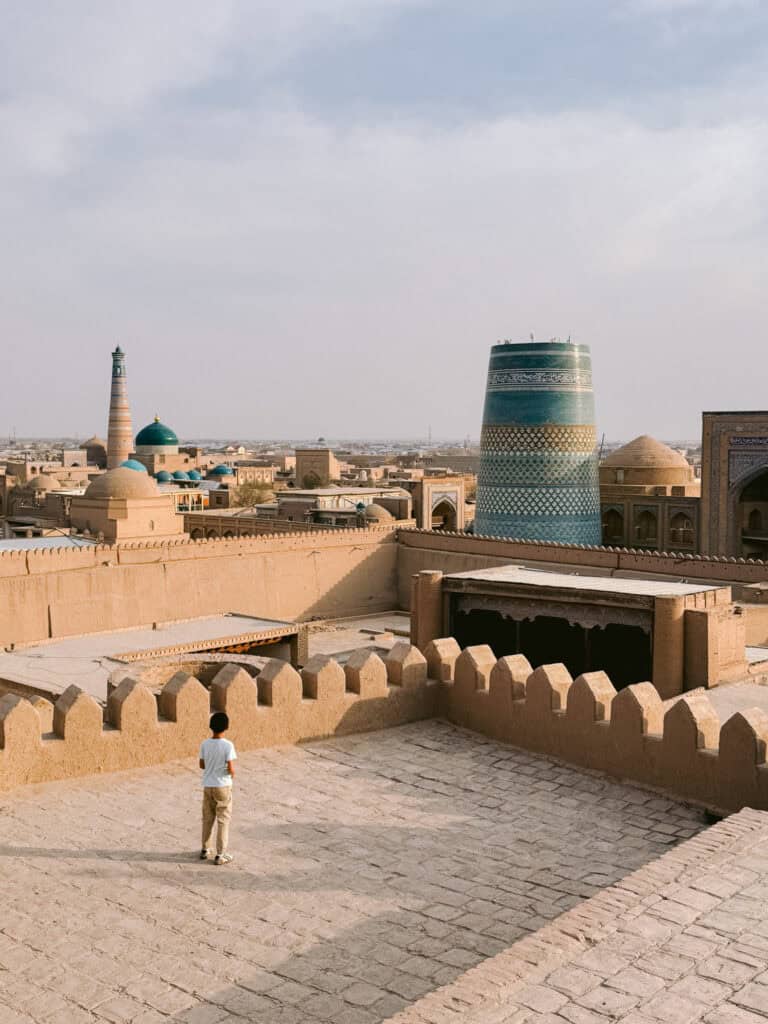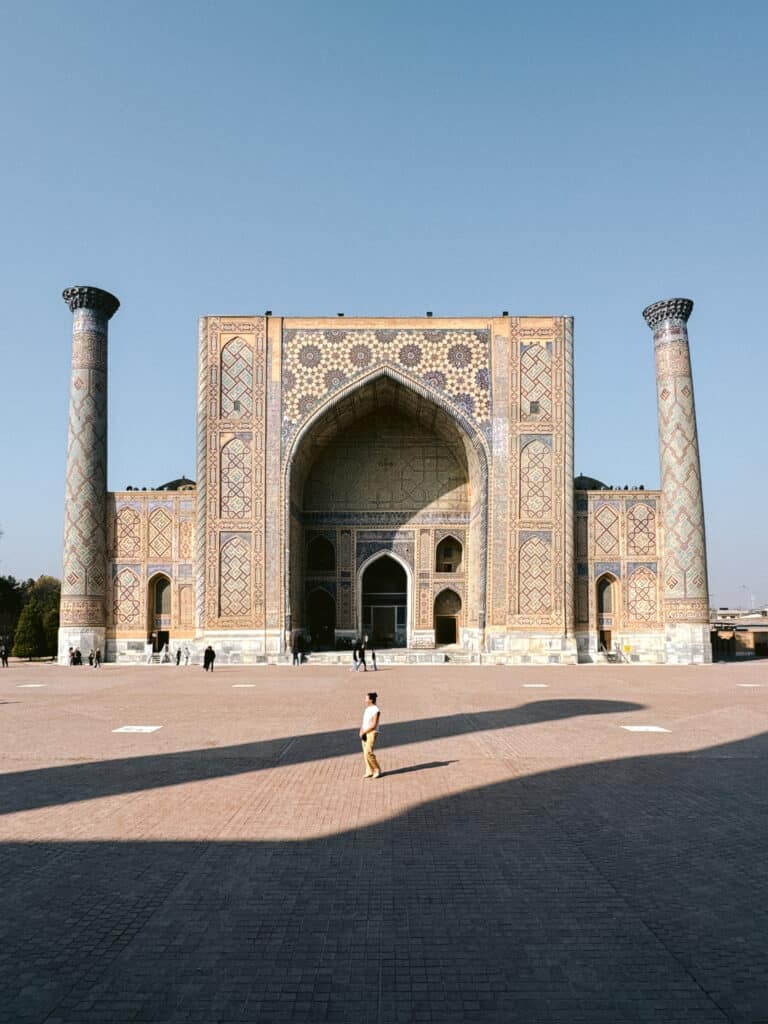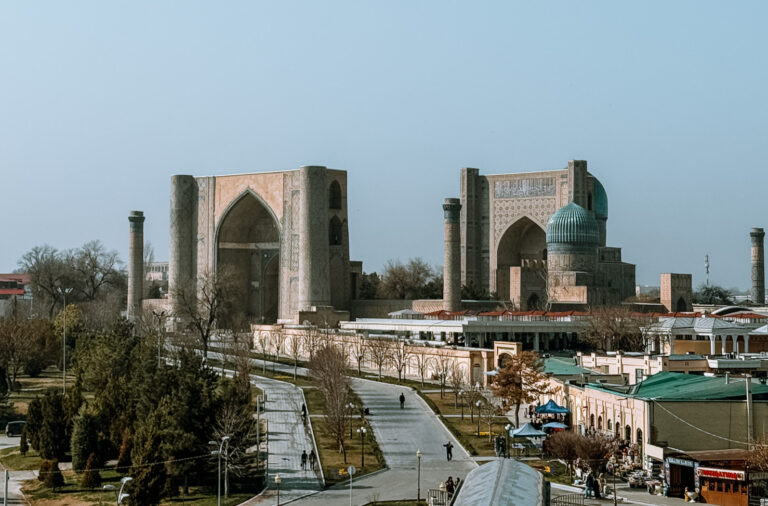Is Uzbekistan Worth Visiting? Why Now is the Perfect Time
Uzbekistan may not be the first place you think of traveling to, but those who make it here are blown away. Is Uzbekistan worth visiting? 100% yes.
Among the Central Asian “stans,” it’s the one that gives travelers the most: the ancient Silk Road cities of Samarkand, Bukhara, and Khiva, UNESCO-listed mosques and madrassas with mosaics that shimmer in every shade of blue, a history of empires and conquests, and a mix of cultures you won’t find anywhere else (Uzbekistanis have a cultural makeup of 60+ different ethnicities). Add in mountains, deserts, and steppe landscapes, and you’ve got a country that feels like several trips in one.
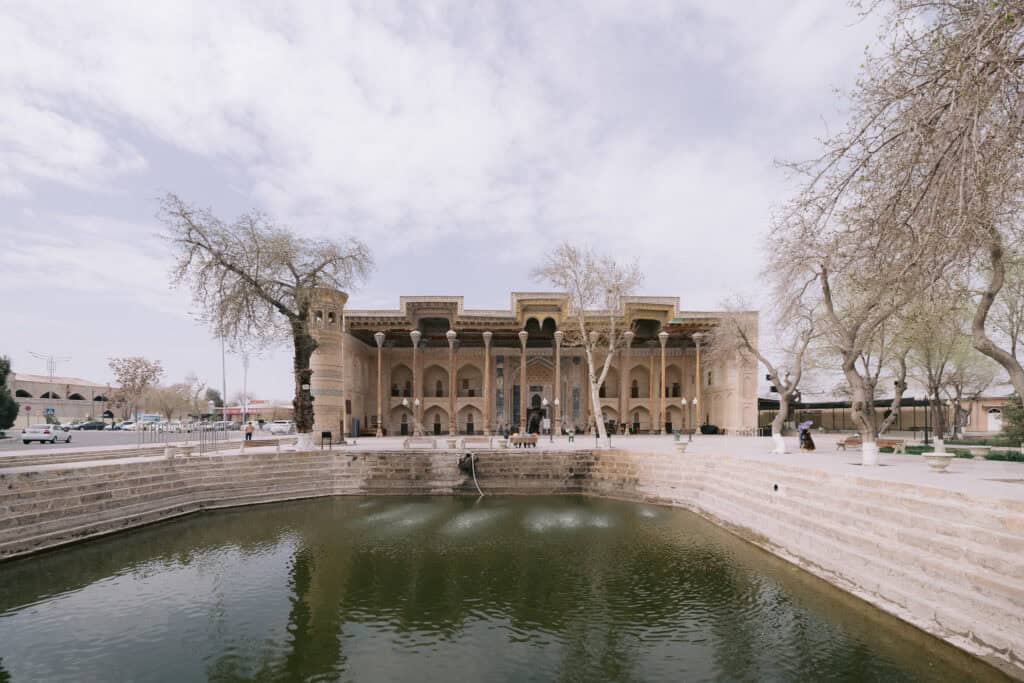
When I traveled to Uzbekistan, I was amazed not just at the architecture and history but at how safe, affordable, and welcoming it felt. Not only is Uzbekistan less touristed, it offers so much bang for your buck compared to more popular destinations (hello, win-win if I ever saw one! 🙌🏼). This guide breaks down all the reasons to travel to Uzbekistan and why now is the perfect time to go.
Why Uzbekistan Is Worth Visiting
It’s A Living Silk Road Legacy
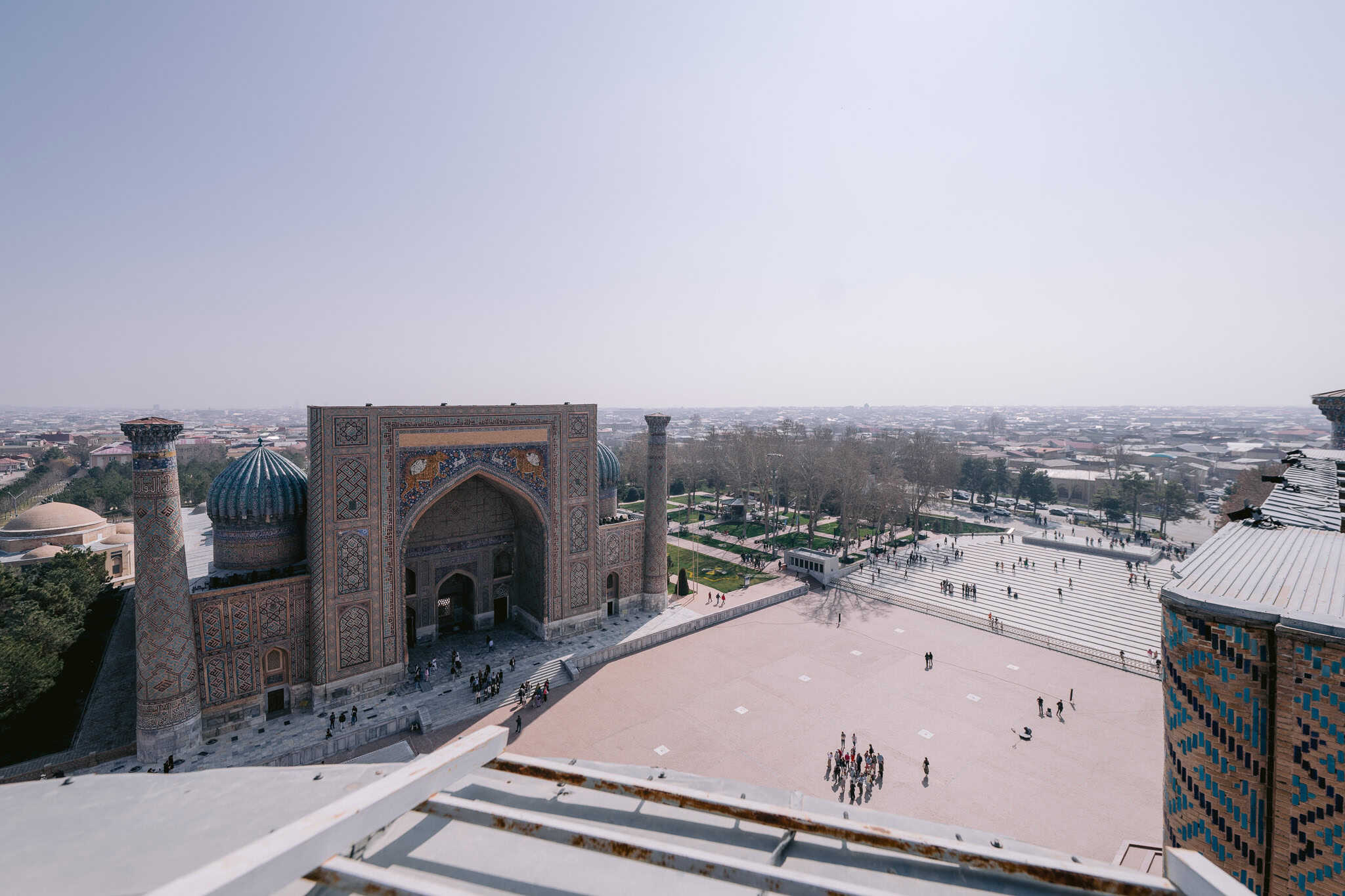
The ancient Silk Road caravan routes ran straight through Uzbekistan, and you can still feel that history today. The four major stops on almost every Uzbekistan itinerary — Samarkand, Bukhara, Khiva, and Tashkent — are like walking through an open-air museum. Here you’ll find UNESCO-listed mosques and madrassas, larger-than-life Islamic architecture, and towns that feel almost fairytale-like with their turquoise domes, mosaic-covered walls, and mud-brick minarets visible from every corner of town.
There’s Stunning Islamic Architecture
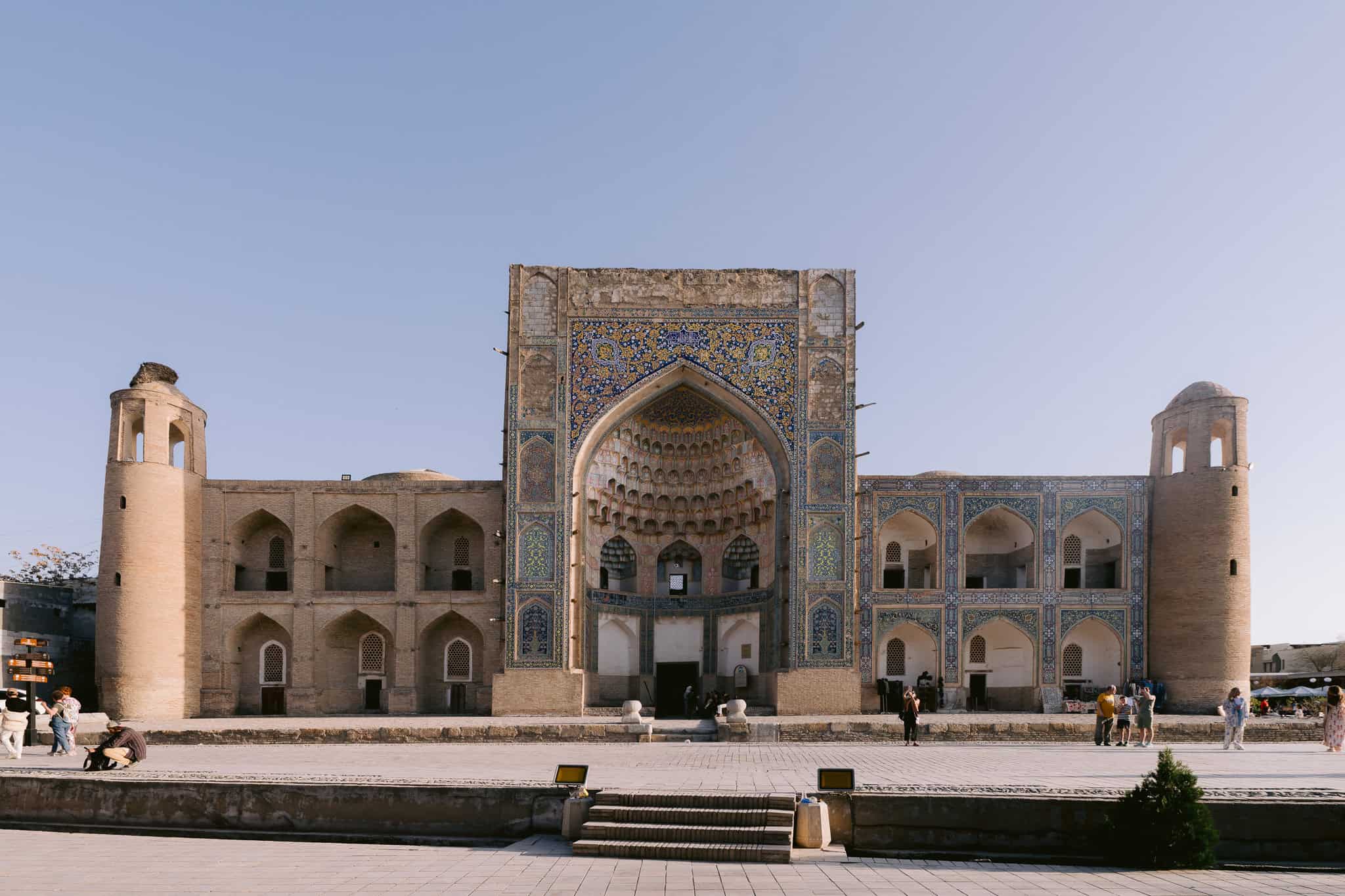
I’ll get straight to the point: the architecture here is STUNNING. The ancient rulers of Uzbekistan wanted their buildings to be imposing, larger than life, and a reflection of their power.
That’s why you’ll find squares like the Registan in Samarkand, flanked by towering madrassas that make you feel like an ant. But it’s not just the size that takes your breath away. Look closer and you’ll see intricate Islamic designs embedded into every facade — shimmering blue mosaics, towering domes, and palaces better than anything Disney could dream up.
Standing face to face with this architecture is a stark contrast to the way we build today. Back then, every wall was an art form, crafted to inspire awe, reflect pride, and command reverence. And you can feel that energy in Uzbekistan.
Uzbekistanis are Warm and Welcoming
If you’re wary of traveling to unfamiliar destinations because you expect vendors to hassle you or locals to scam unsuspecting tourists, rest easy — Uzbekistan is different.
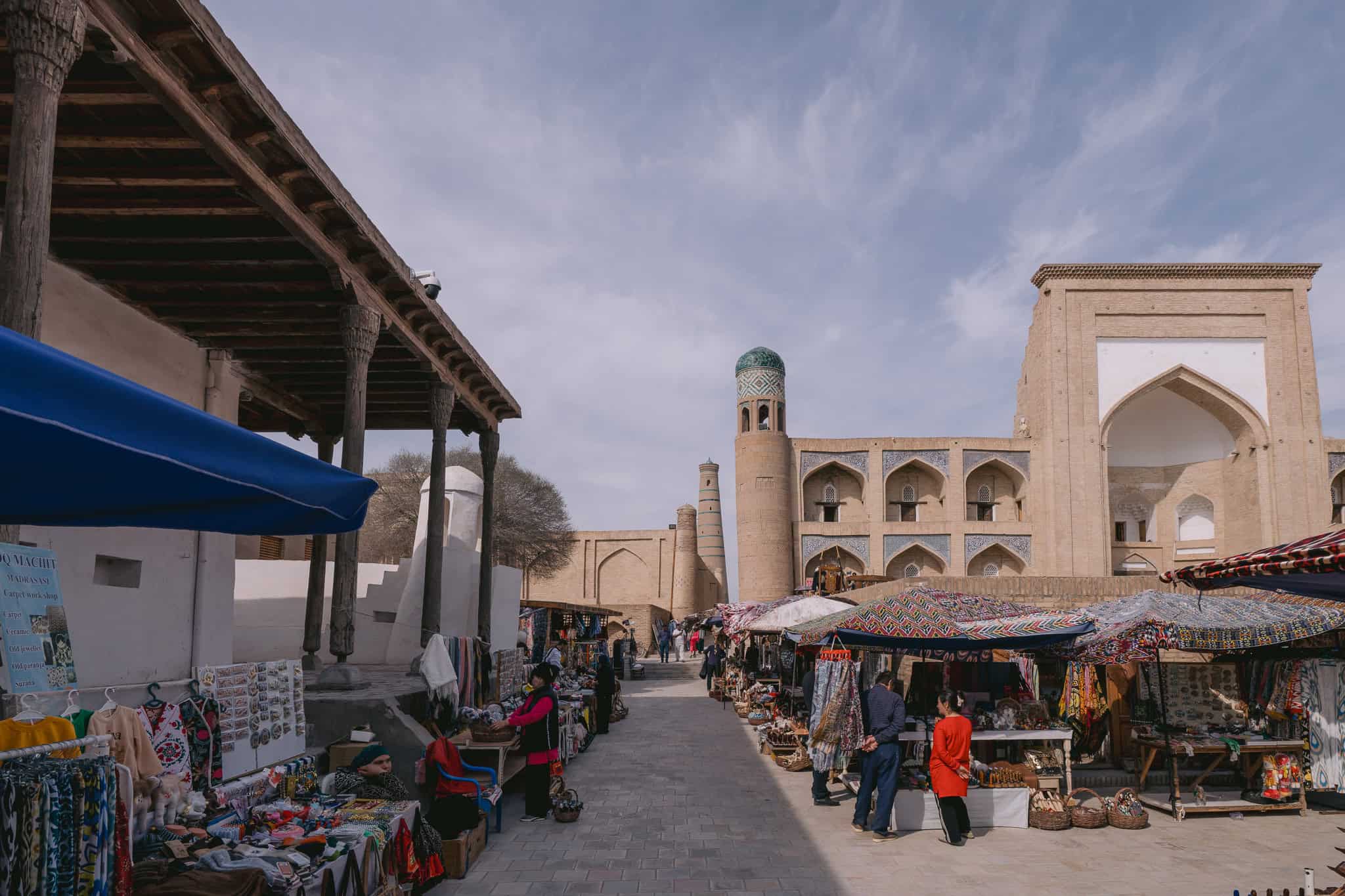
I wandered through bazaars, restaurants, souvenir shops, and major historical sites and only ever encountered friendly locals. As a solo female traveler (well, with my young son in tow), I never once felt unsafe or out of place.
Natural Beauty Beyond the Cities
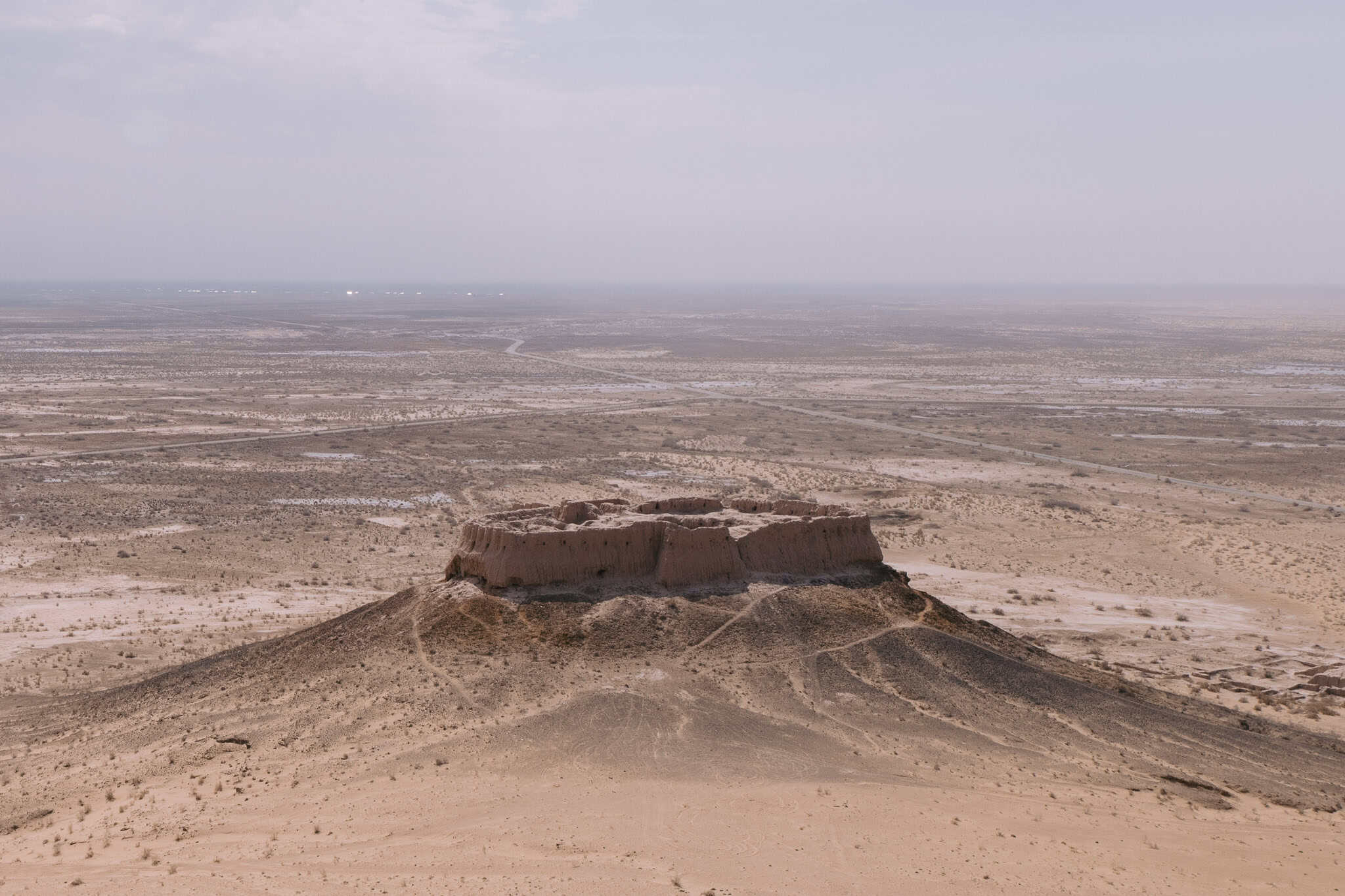
Uzbekistan is known for being the crossroads of history and the Silk Road, but there’s beauty in its landscape, too. I drove through both picturesque, winding mountain roads and deserts dotted with abandoned mud-brick fortresses. It’s a reminder that even the harshest environments were once alive with trade and power.
For the truly curious and off-beat, you can also visit the Aral Sea and learn why it was the biggest human-made environmental catastrophes in history.
Practical Reasons Uzbekistan Is Worth Visiting
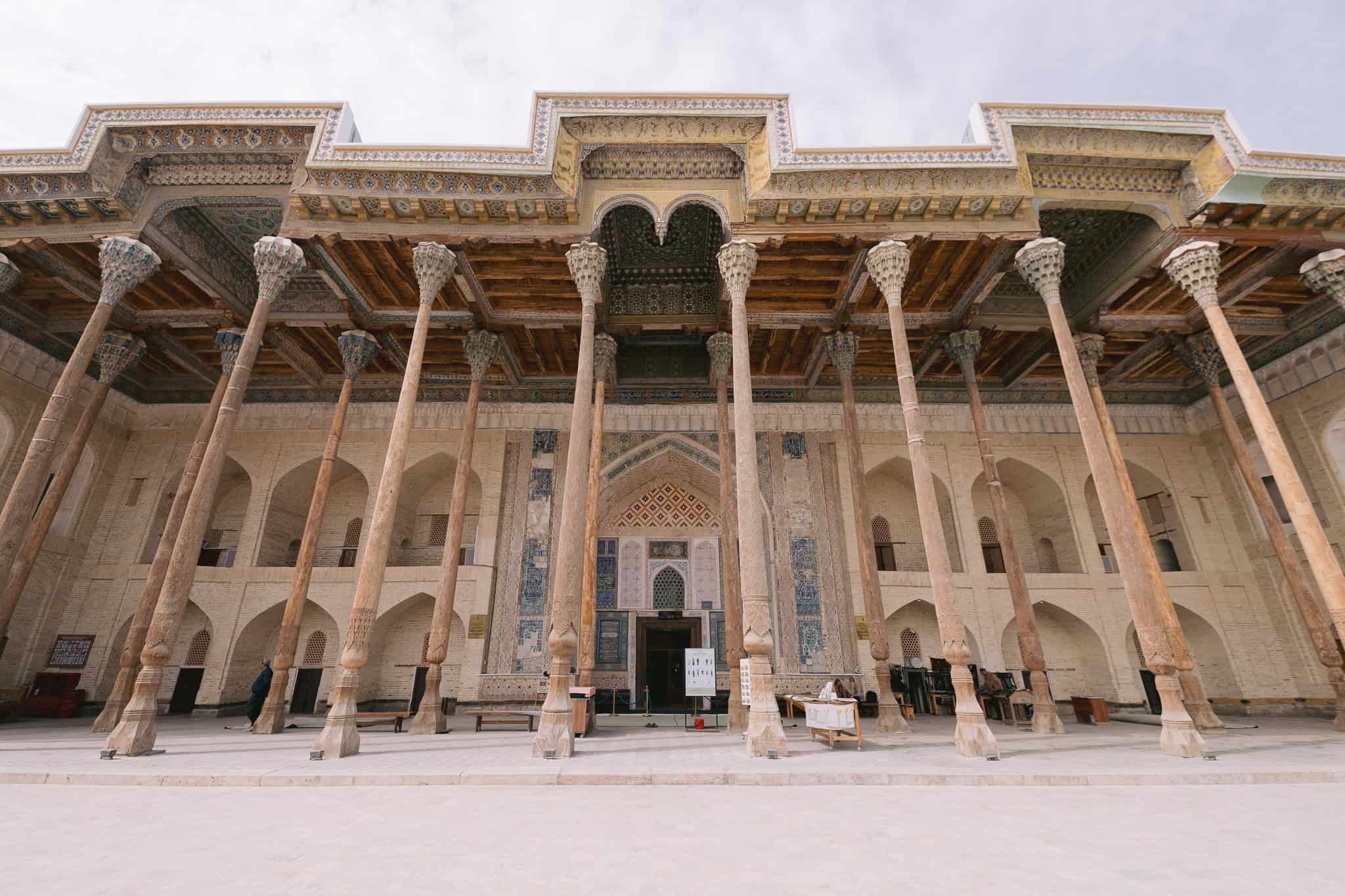
Is Uzbekistan Safe for Travelers?
Yes, it is safe to visit. In fact, Uzbekistan is listed as #1 in the Safety Perception Index in 2023.
I traveled independently as an American solo female traveler (with my young son) and never once felt unsafe. Locals kept to themselves (read: no tourist harassment) and I saw plenty of tourist police stands at major sites. When I needed help, people were quick to point me in the right direction, make sure I caught the right train, or even help me order food. Crime is very low, and friendliness is high. For that reason, I’m comfortable saying Uzbekistan is safe for visitors, including US citizens and women traveling alone.
I wrote a whole post about my impressions about the safety of traveling in Uzbekistan as a women.
How Easy Is It to Travel in Uzbekistan?
Uzbekistan has excellent travel infrastructure, which makes it easy to explore independently.
- Trains connect major cities like Tashkent, Samarkand, and Bukhara quickly and inexpensively.
- Within cities, Yandex Go (their version of Uber) makes getting around simple. Most rides across town cost under $2 — cheap enough that there was no point in taking a bus.
- Hotels can also connect you with guides or tours if you want local insights.
All of this makes Uzbekistan easy to travel around on your own.
Costs – Is Uzbekistan Expensive?
Uzbekistan is an affordable travel destination. In fact, it’s one of the most affordable I’ve come across. Whether you’re into budget travel or looking for value for money, you’ll find both here.
Here are sample costs I saw (in USD):
- Hotels: $30–$150 per night
- Taxis: $0.60–$2 per ride in town
- Meals: $3–$15 per person
- Coffee/tea: $1.50–$2 at a tourist cafe
- Entrance tickets: $1–$15, depending on the site
If you’re a backpacker, you can really extend your travel budget here. If you’re a middle-of-the-road traveler like I am, you can spend less in Uzbekistan than you would on basics back home.
Best Time to Visit Uzbekistan
The best time to visit Uzbekistan is in spring (April–May) and autumn (September–October). The weather is mild and pleasant, unlike the scorching hot summers or freezing winters.
These months are also peak tourist season, so you’ll run into more crowds at the big sites. If you want fewer people, try visiting just outside these windows. I went in mid-March and had lovely weather in Samarkand with smaller crowds. Please note, Khiva and Bukhara were already filling up.
Sample Itineraries to Inspire You
When travelers search for an Uzbekistan itinerary, they quickly realize there are four major cities worth seeing — each with possible day trips around them. How long you stay depends on whether you’re content with just hitting the highlights or if you want to linger at sites and tack on sidetrips.
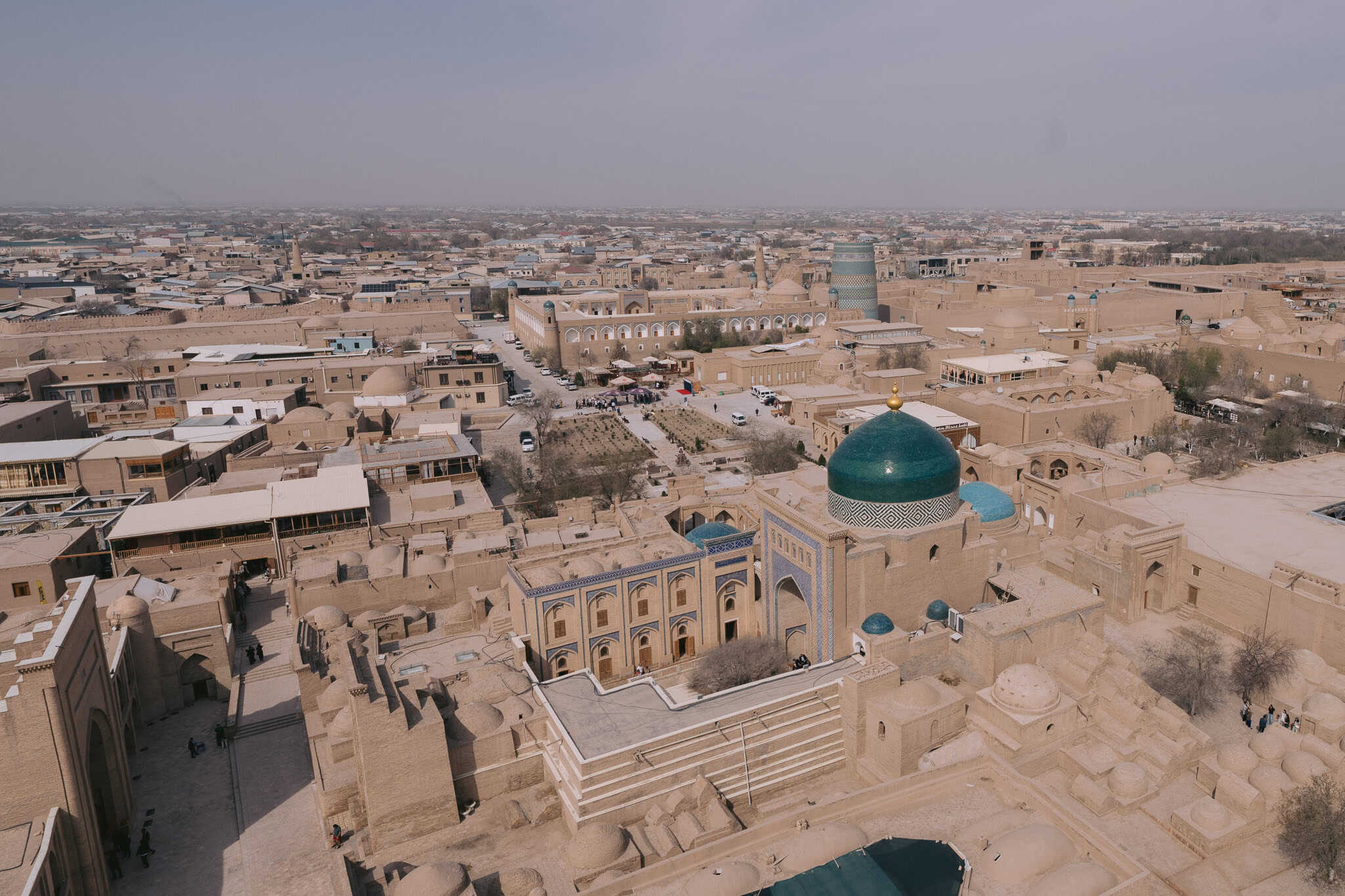
If you only want to see the cities themselves, here’s what I’d prioritize based on wow-factor and travel distances:
5-days Uzbekistan Itinerary: Samarkand & Bukhara
- Day 1: Arrive in Samarkand
- Day 2: See Samarkand
- Day 3: Take a train to Bukhara
- Day 4: See Bukhara
- Day 5: Return by train to Samarkand
7-Day Uzbekistan Itinerary: Tashkent, Samarkand, Bukhara, Khiva
- Day 1: Arrive in Tashkent
- Day 2: See Tashkent
- Day 3: Take an early train to Samarkand and see Samarkand
- Day 4: Take overnight train to Khiva and see Khiva in half-day
- Day 5: Take train to Bukhara
- Day 6: See Bukhara
- Day 7: Take train back to Samarkand or Tashkent for departure
⚠️ Note: These are whirlwind itineraries. They don’t include sidetrips (and there are some fascinating ones!). Train schedules can also throw a wrench into planning. For example, when I checked, the Samarkand–Khiva trains left around 2–3am and don’t run daily. Be flexible if you’re relying on trains, or consider private transfers like I did.
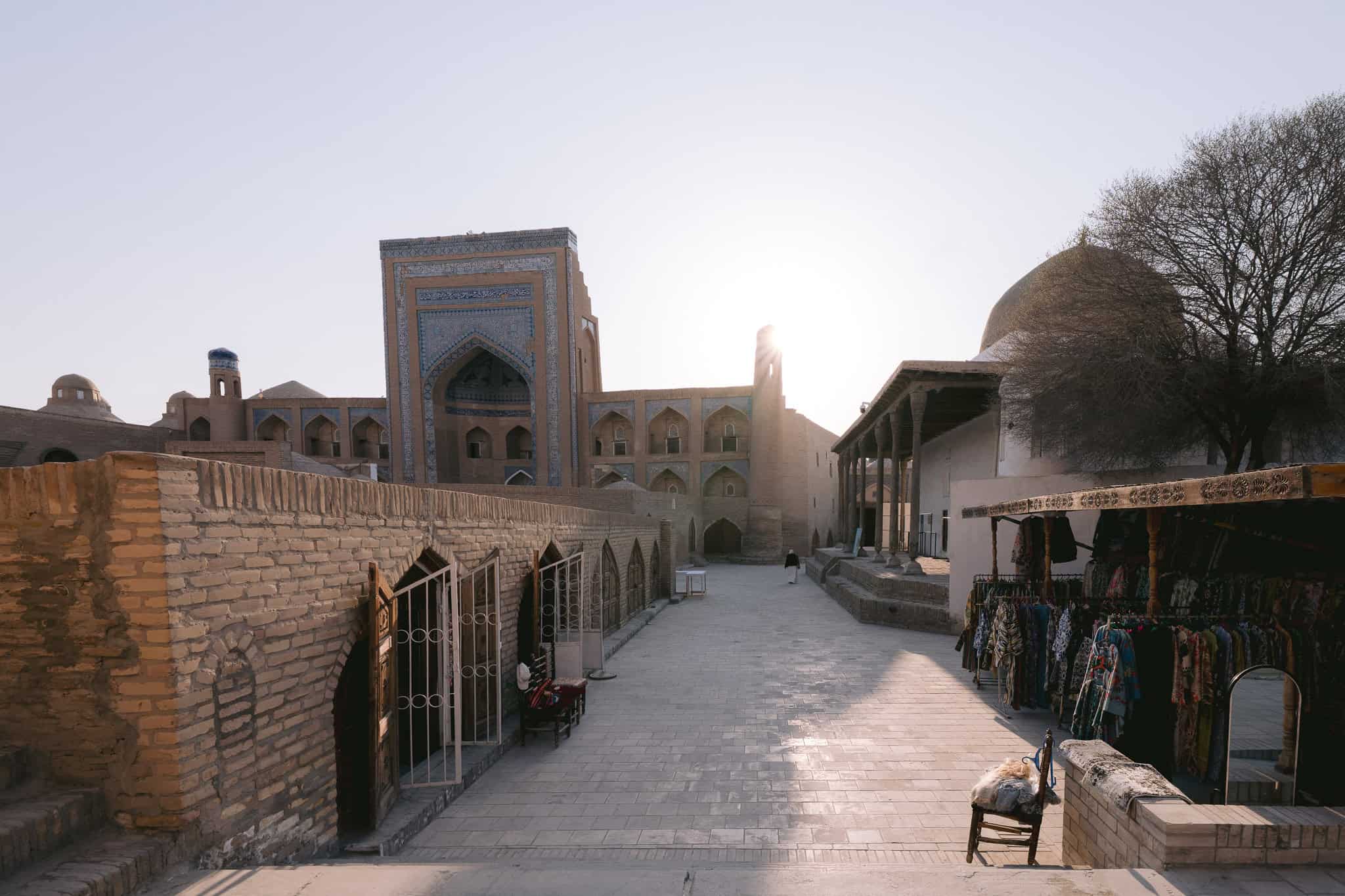
Personally, I chose a 10-day trip, skipped Tashkent (I’d already seen other Soviet-style capitals), and spent extra time in Samarkand, Khiva, and Bukhara including some day trips in each. I wasn’t willing to take an overnight train, so I used private transfers instead. I might have missed the “Soviet train” experience, but I was happy to trade that for a good night’s sleep in a real bed. 😉
⭐ Planning Uzbekistan Just Got Easier
If you’re convinced Uzbekistan is worth visiting but don’t want to spend hours figuring out visas, trains, routes, or which city to go to first — I already did that work for you.
👉 Grab my downloadable Uzbekistan Travel Guide — it includes:
✅ My exact itinerary (with suggested alternatives)
✅ Train routes + transport breakdowns
✅ Hotels I personally stayed at and recommend
✅ Visa tips, money-saving hacks & safety notes
✅ Bonus: Mention my name to my recommended tour guide for 20% off
What Makes Uzbekistan Different from Other Destinations
It’s Off the Beaten Path (for now)
Back in 2017–2018, Uzbekistan eased visa restrictions for many countries, essentially opening its doors to tourism. Since then, visitor numbers have grown steadily. In 2024 alone, the country welcomed 8 million tourists.
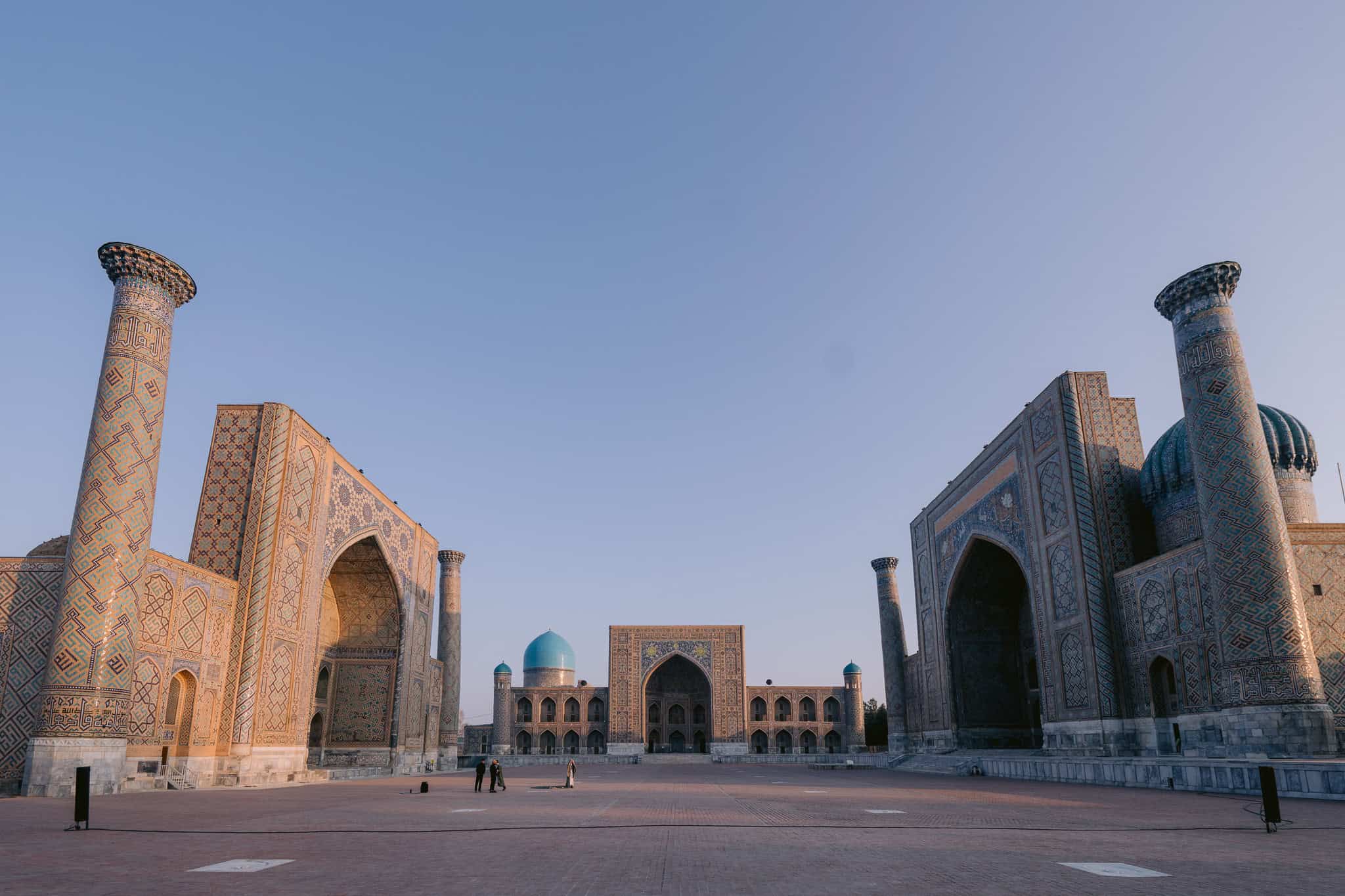
Even so, Uzbekistan remains less traveled than mainstream destinations — especially for Americans — which means it still carries that underrated, off-the-beaten-path appeal. Travelers are quickly discovering how much there is to see, do, and learn here… and why it’s one of the most underappreciated places to visit right now.
If you’ve been thinking of visiting, now is the time. Go before Uzbekistan turns into the next over-touristed stop on the global travel map.
A Country in Transition
Travel to Uzbekistan today and you’ll quickly notice it’s a country that’s balancing its past with its future. The country only gained independence from the Soviet Union in 1991, and traces of that era are still everywhere (the blocky Soviet-style architecture in towns is a dead giveaway; this is even more apparent in Tashkent).
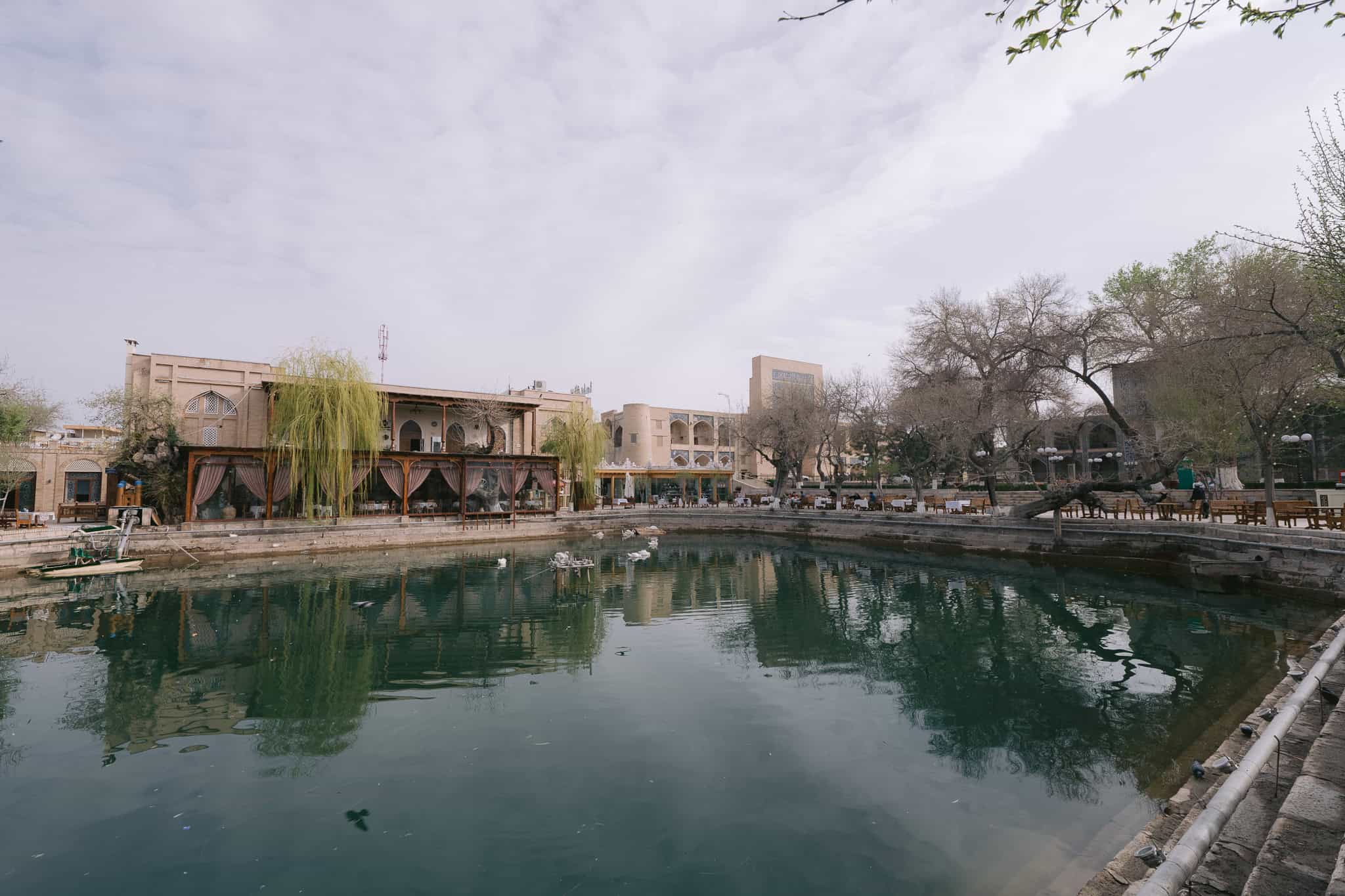
But alongside that, Uzbekistan is rapidly opening up to the world. Visa restrictions were lifted, tourism infrastructure is improving every year, and cities are polishing up their Silk Road landmarks to attract more visitors. You’ll see shiny new cafes next to centuries-old madrassas and bullet-fast Afrosiyob trains connecting ancient cities. Bukhara, in particular, really exemplifies that feel of a town that’s successfully combined ancient and modern.
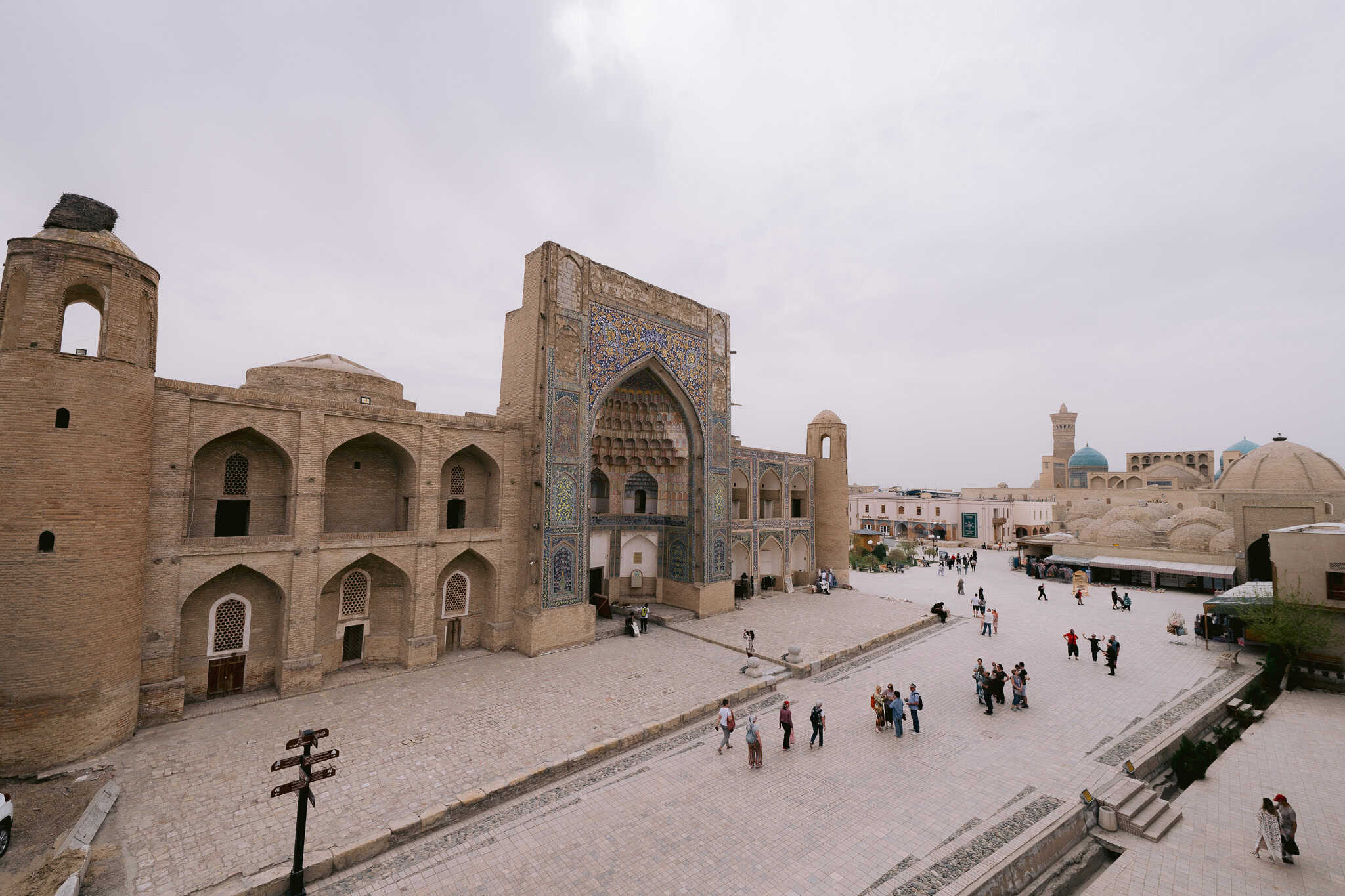
It’s this contrast — post-Soviet combined with Silk Road grandeur — that makes Uzbekistan feel like a country in transition. It’s not “finished,” and that’s part of what makes it interesting.
How Uzbekistan Compares to Other Silk Road Destinations
I haven’t been to every Silk Road city but I’ve been to many. Here are my thoughts on how Uzbekistan’s Silk Road cities compare to others.
Turkiye vs Uzbekistan
Turkiye has Ottoman mosques and palaces woven into modern cities. Meanwhile, Uzbekistan’s Silk Road cities like Samarkand, Bukhara, and Khiva feel more preserved in time. They are like walking through an open-air museum where madrassas, mosques, and minarets still dominate the skyline.
Syria vs Uzbekistan
In Syria, I experienced the history of the Silk Road in the bustling souks of Damascus and Aleppo, major cities where trade once flowed between the East and the Mediterranean. While I love a good souk everywhere I travel (chaotic, loud, a feast for the senses), the vibe in Uzbekistan’s Silk Road cities was more about the monuments, vast squares, and the projection of power through architecture. Yes, there are souks too, but they weren’t the cacophonous experience you’ll find in the Middle East.
Jordan vs Uzbekistan
And did you know that Petra was also on the Silk Road? Petra is a single, jaw-dropping site in Jordan, with massive stone tombs carved into cliffs unlike anywhere else I’ve seen. Uzbekistan, on the other hand, offers an entire circuit of Silk Road cities and linked by high-speed trains.
All of this makes Uzbekistan a uniquely distinct Silk Road destination in Central Asia. Its scale and grandeur are unmatched, yet it remains less touristed than many other places along the route.
Challenges to Keep in Mind
While I absolutely believe Uzbekistan is an “easy” travel destination for an experienced, mindful traveler, there are some challenges to be aware of that you’ll want to be prepared for. I’ve included Uzbekistan travel tips below to help you navigate them:
- Language: Most people speak Uzbek or Russian. In the tourism industry, some will speak English, but not everyone. I often used Google Translate to get by, and taxi drivers almost never spoke English.
- Cash Economy: Cash is king in Uzbekistan. You’ll definitely need it to pay for entrance fees. Some restaurants take credit card. Some don’t. Some hotels allow you to pay with credit card and some…. say their credit card machine is broken. The net of it is: bring the cash you need. ATMs exist, but they often limit withdrawals and can be unreliable so don’t rely on them exclusively.
- Dress modestly: Uzbekistan is a predominantly Muslim country. Think longer skirts or pants, and keep shoulders covered. Leave crop tops and daisy dukes at home, and pack a scarf — it’ll come in handy for both comfort and respect.
- Train schedules: I hinted at this earlier, but every blog talks about how you can use trains to get around. Yes, you can. But the trains don’t run frequently. Some routes are daily. Some are only a few days a week. Some depart at convenient times and others depart in the wee hours of the morning. If you plan to take trains, look at the schedules before you commit to an itinerary.
FAQs About Visiting Uzbekistan
Yes, it’s safe! I actually felt safer in Uzbekistan than in parts of Western Europe. I didn’t have to worry about vendors hassling tourists or pickpockets. Plus, there are tourist police stands at major sites, which adds extra peace of mind.
Yes. Since easing visa restrictions for many countries, Uzbekistan has been opening its doors wide to tourism. The tourist infrastructure — trains, taxis, hotels — is solid and only improving each year.
Not at all. Compared to most European trips, Uzbekistan travel costs are much lower. I took taxis across town for under $2. Meals ranged from $3–$15. Decent hotels start at around $30/night. You get a lot of value for your money.
Uzbekistan is famous for its ancient Silk Road cities like Samarkand, Bukhara, and Khiva. These cities give you a glimpse of what it was like to travel the Silk Road centuries ago. Today, they’re filled with some of the most intricate Islamic architecture you’ll see anywhere in Central Asia.
Spring (April–May) and autumn (September–October) are ideal. The weather is pleasant, not scorching or freezing. But those months also bring more crowds. If you want fewer tourists, try just before or after. I went in mid-March and had decent weather with only light crowds.
Uzbekistan offers visa-free entry to many nationalities but not all. I recommend checking out entry requirements with your nearest Uzbekistan embassy to be sure.
US citizens between 16 and 55 years old will need a visa. If you’re under 16, you can get visa-free access as long as you’re with your legal guardian. If you’re over 55, you get visa-free access for up to 30 days.
If you do need a visa, this is the official e-visa portal.
Spend at least a minimum of 5 days if you’re just after a whirlwind trip. If you really want to dig deeper into each Silk Road city and tack on day trips, however, consider setting aside 10-14 days to see the highlights. There’s no shortage of things to do or see.
Final Verdict: Is Uzbekistan Worth Visiting?
I hope I’ve shown you that not only is Uzbekistan worth visiting, it’s only a matter of time before the rest of the world realizes it, too.
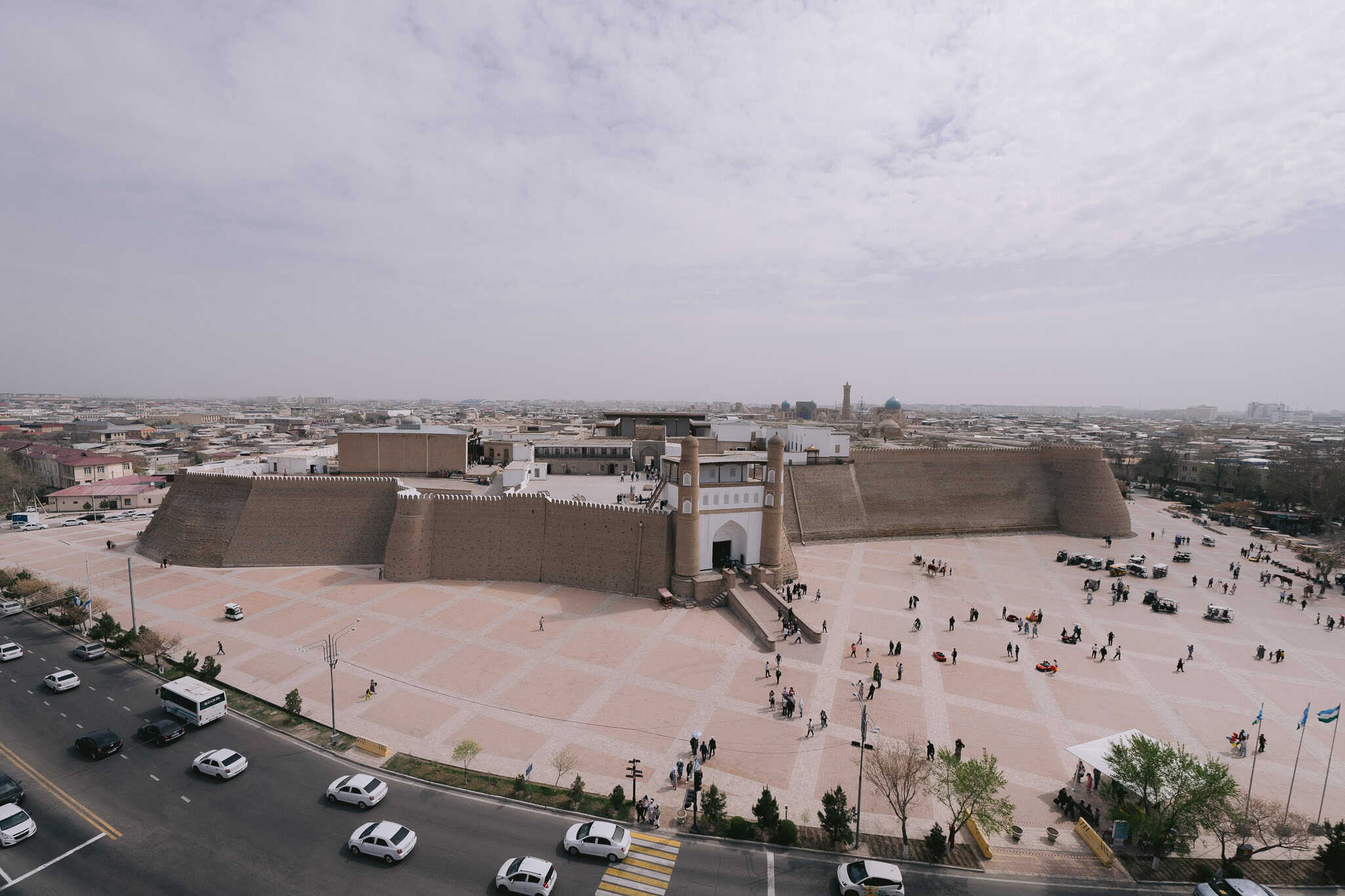
Uzbekistan has centuries of Silk Road history, ancient stories to tell, and monuments that put today’s to shame. Its architecture is colorful, intricate, and larger than life. Its people are friendly and welcoming of travelers. And unlike destinations on the mass-tourism map, Uzbekistan still feels refreshingly less touristed. Even within Central Asia, it’s one of the easiest countries to see, and it packs more punch than most.
If you’ve ever wondered what it’s like to wander through a part of the world that was once the center of it all, Uzbekistan is where you’ll find out.

